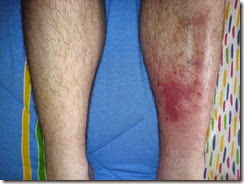Despite its impressive size and comparative toughness, a lot of problems and issues can plague the skin. Harmful ultraviolet sun radiation can damage the DNA in the cells of the skin, which could lead to sunburn or worse, cancer.
Moreover, the effects of windy and dry climates can reduce skin moisture, leading to chapped and painful skin areas. Sebaceous glands of the skin can also become clogged and that can cause acne and pimples.
You can take different measures in order to prevent any skin damage caused by environmental exposure. However, it is important to remember that other skin problems can take place from the inside of your body and are the result of some genetic mutations that you might have inherited from your parents. Such inherited skin issues are collectively known as genodermatoses.
It is highly important to understand the relationship of your genes or genetic makeup and skin problems to learn more about how genetics are involved in skin disorders.
Learn More About Genetic Skin Diseases
Genodermatoses or genetic skin diseases are heritable skin conditions that primarily affect the skin as well as its appendages. These can be attributed to single gene mutations that may be transmitted by just one or both carrier parents. They may also arise as a new event during the process of maturation of egg or sperm cells in healthy parents.
The overall ranges of these genetic dermatological disorders are actually far-reaching. Others, such as psoriasis can be treatable and mild with natural remedies. Some, such as harlequin-type ichthyosis can be serious.
Epidermolysis Bullosa. This is one of the most common inherited skin diseases leading to blistering from just mild pressure or moderate changes. Usually, people have a blister response once the inner and outer layers of their skin become separated.
Lamellar Ichthyosis. This skin disorder is relatively rare. Those patients with lamellar ichtyosis develop thin scales on their skin. Generally, the patients may develop signs and symptoms of the disease in early childhood,
Cutaneous Porphyria. This skin disorder makes up 6 different types of inherited disorder porphyria. In every disorder, patients can’t produce sufficient enzymes that generate heme, an essential red blood cell component that is responsible for delivering oxygen to the body. Those who are suffering from this disease may have very photosensitive skin. The skin also develops blisters, redness and painful irritation after being exposed to the sun, even for a short period of time.

